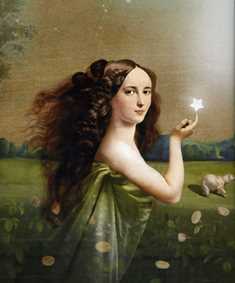Opera was “invented” coincident with the Baroque era in
music (1600-1750) when a group of artists
and scholars known as the Florentine Camerata met at the turn of the 17th
century in Florence, Italy. Their intent was to revive Greek drama, perceived
as a sung form, or “music drama.” Originally intended for private consumption by
the aristocracy, it evolved over the course of the century into a wildly
popular entertainment, performed in public opera houses, most
prolifically in Venice.

Along with Claudio Monteverdi, Francesco Cavalli was one of the best known of the early opera composers. His work, long eclipsed, has been revived in recent years, including his 1651 opera “La Calisto,” which will receive its Cincinnati Opera premiere Thursday in Corbett Theater at the School for Creative and Performing Arts. (The actual Cincinnati premiere, which was also its American premiere, took place in 1972 at the University of Cincinnati College-Conservatory of Music.)
By Cavalli’s time, opera had become more than “sung speech,”
but a form consisting of arias, ensembles and choruses, in addition to
recitative. Though still largely derived from historical and mythological
sources, the subject matter further evolved to include comic as well as
serious elements.
“La Calisto” is a perfect example of mid to late-seventeenth century opera, with a plot involving Greek gods and goddesses, but in some highly amusing and downright bawdy situations. Derived from episodes in Ovid's "Metamorphoses," "La Cslisto" is Cincinnati Opera’s first foray into Baroque opera.
In the thoroughly convoluted and hilarious plot, Jove, the king of the gods, descends to earth to try to clean things up after a war. He spots the beautiful nymph Calisto and approaches her, but she rejects his advances since she is a virgin devoted to the chaste goddess Diana. Mercury persuades Jove to take the form of Diana so that he may woo her. He does and she accepts his/her lovemaking. A shepherd, Endymion, is in love with Diana and she with him, though she turns him away when he confesses his love in order to keep it a secret. Seeing Diana, Calisto expresses her happiness at having shared love with her, but Diana, who of course knows nothing about Jove’s ruse, angrily dismisses her.
A subplot involves the aging nymph Linfea, who announces that she would like to have a lover, too. When Satturino, a goat-headed satyr, volunteers, she rejects him in disgust. (Later in the opera, she will fend off both Satturino and his fellow satyrs.) Meanwhile, Pan, god of the satyrs, confesses that he also loves Diana. Endymion falls asleep and dreams of Diana, who arrives and kisses him.
Jove’s wife Juno comes to earth to see what her husband has been up to and soon finds out. Jove-as-Diana seeks another tryst with Calisto, but mistaking him/her for the real Diana, Endymion approaches. Seeing their encounter, Pan and the satyrs capture Endymion. Calisto reappears looking for Diana, but Juno takes revenge by turning her into a bear. Diana rescues Endymion. Jove, still in love with Calisto, tells her that when her life on earth is over, she will live among the stars. They say farewell.
Singing Calisto will be soprano Nathalie Paulin, with bass Daniel Okulitch as Jove, soprano Jennifer Johnson Cano as Diana, countertenor Michael Maniaci as Endymion, soprano Alexandra Deshorties as Juno, tenor Andrew Garland as Mercury, tenor Thomas Michael Allen as Linfea, soprano Alisa Jordheim as Sattirino, tenor Aaron Blake as Pan and bass Nathana Stark as Sylvano.
Making the production even more special, the Opera is collaborating with Cincinnati’s early music ensemble, Catacoustic Consort. The continuo section (the group of instruments that provide the harmonic structure of the music), will consist of two harpsichords, two theorbos (large Renaissance lutes), baroque harp, lirone (a bass stringed instrumented similar to a viola da gamba), viola da gamba and string bass. The remainder of the orchestra includes violins, cornetto (an early wooden wind instrument), recorders and percussion. The orchestra will be led by Baroque specialist David Bates in his Cincinnati Opera debut.
The set may look familiar, as it was used in last season’s “Galileo Galilei” by Philip Glass, also produced at the SCPA’s Corbett Theater, an ideal intimate space seating 750 people. There will be five performances: July 17, 20, 23, 25 and 27. Information and tickets at (513) 241-2742, or order online at www.cincinnatiopera.org